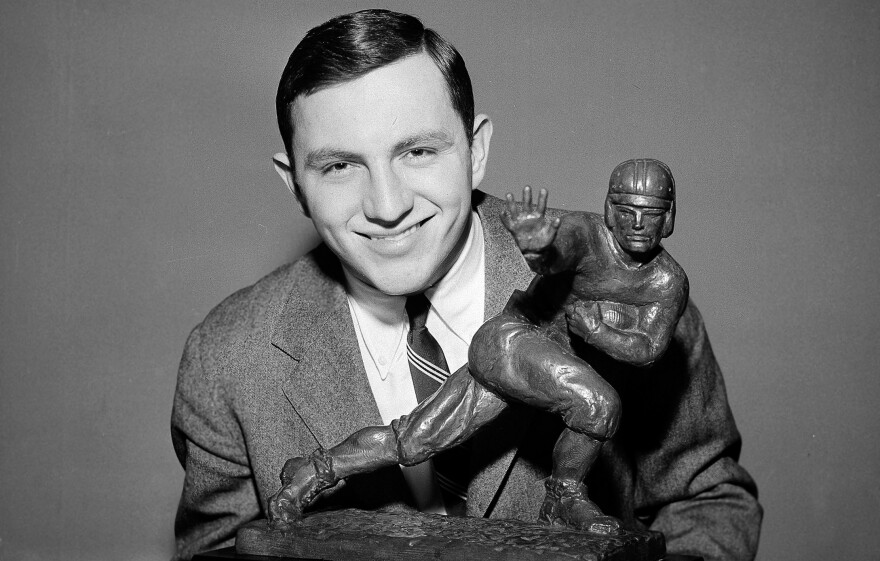You may never have heard of Dick Kazmaier. After all, he played in the Ivy League, never went to the NFL and filled a position, tailback, in a formation, the single-wing, that has long since disappeared.
But as the years have passed, that is what makes Kazmaier so special: that he best represented another time, when there was more whimsy and capriciousness to college athletics.
He was only 5 feet 11 inches tall, 155 pounds. He came from nowhere — which was Maumee, Ohio — and was unknown to the football staff when he arrived at Princeton University in 1948. On the freshman football team, he was fifth-string. Only three years later, he was the famous Kaz, on the cover of Time magazine, winner of the Heisman Trophy, voted Male Athlete of the Year. Then, instead of the Chicago Bears, he went to Harvard Business School. Athletes still came out of nowhere back then and sometimes moved right on to somewhere else.
The single-wing was all but gone then, replaced by the T-formation, the quarterback taking the ball under center. At tailback, Kazmaier caught the hike (remember "hike"?) several yards back, and both ran and passed. Oh, a tailback was glamorous, but so demanding that it was really too much for one player. His Heisman year Kaz threw for 966 yards and ran for 861. So then we had to have quarterbacks who passed and running backs who ran.
It's ironic that 60 years later, some quarterbacks have become at least neo-tailbacks, as the T-formation has evolved into the shotgun into the pistol. Modern quarterbacks who run are not exactly the heirs to Kazmaier, but they do offer us a chance to imagine the past, like clothes that come back into fashion — only not quite the way they were, maybe another pleat here, a cinch there. A tailback was of his time.
Kaz was, as you might expect, modest and well-liked. He's the sort of fellow my father called "a honey of a guy." After football, as a businessman and philanthropist, he lived a full, happy life, but for one great tragedy, when one of his six daughters — Patty — died of a blood disease at 28. A natural athlete like her father, Patty played ice hockey, and the trophy for the top female college player is named for her: the Patty Kazmaier Award.
Dick Kazmaier devoted himself to the cause of women's sports. He was not a man to press his sadness on others, but because I'd lost a daughter before him, he felt he could speak to me once about how much he missed Patty. He wanted to know how long the missing kept hurting. I said the best I knew it never got easier, but it did somehow get softer.
"Yeah," he said, and then he smiled through his tears. Dick Kazmaier died the other day, at age 82. He was the epitome of a tailback and a honey of a guy.
Copyright 2021 NPR. To see more, visit https://www.npr.org.







